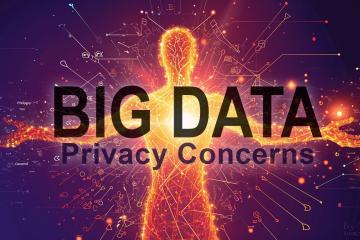Data protection refers to the policies, procedures, and technologies implemented to secure sensitive information from unauthorized access, use, theft, disruption, modification, or deletion.
As data generation and collection grows exponentially, effective data protection is a fundamental component of cybersecurity. It enables organizations to uphold privacy commitments, comply with regulations, and mitigate substantial risks associated with data loss or exposure.
Why is data protection important? Data contains an organization's most valuable digital assets - intellectual property, financial information, personal data of customers or employees. Without adequate safeguards, this data can be misused, leaked, or stolen. Aside from reputational and financial damages, poor data protection practices can lead to steep regulatory fines for privacy violations. As threats increase, organizations must make data protection central to their security strategy.
Key Concepts:
Definition:
Data protection refers to the policies, procedures, and technologies focused on securing sensitive or confidential data, in storage and transit, from compromise or unauthorized access, disclosure, disruption, modification, inspection, recording or destruction.[1]
It aims to uphold an organization's data security and privacy responsibilities by ensuring proper controls exist across people, processes and technology to identify and safeguard high value data.[2]
Purpose:
The key purposes of data protection include:
- Maintaining confidentiality by allowing only authorized users to access specific data.[3]
- Preserving integrity by preventing improper data modification or destruction.[4]
- Ensuring availability of data for authorized requirements in a timely manner.[5]
- Meeting regulatory compliance for privacy, data security and retention.[6]
- Minimizing risk of data breaches, loss or leaks by understanding vulnerabilities.[7]
- Protecting reputation by securely handling sensitive data like intellectual property, customer information or financial data.[8]
Relevance:
With growing reliance on data across industries, effective data protection is a business-critical requirement. Key drivers include:
- Digitization accelerating data generation and dependence on analysis for innovation and efficiency.[9]
- Increasing privacy regulations imposing steep fines for violations involving personal data.[10]
- Expanding attack surface with cloud adoption, mobile workforce and third parties handling data.[11]
- Emerging threats like ransomware which can paralyze operations by encrypting data.[12]
Data protection must evolve as an organization and the threat landscape changes to manage risk.
Also Known As:
- Information protection
- Data security
- Data privacy
Components/Types:
Data protection involves various layers[13]:
Data Governance:
Policies, roles, processes for managing data as an asset and upholding security and privacy. Helps identify sensitive data and guide controls.[14]
Physical Security:
Physical barriers, access controls and surveillance protect data stored on-premise from theft or tampering.[15]
Cybersecurity Controls:
Securing infrastructure, endpoints, networks, applications and cloud environments storing/processing data.[16]
Access Management:
Managing access to data via identity verification, least-privilege principles and encryption.[17]
Data Encryption:
Cryptographic techniques scramble data making it unreadable to unauthorized parties.[18] Applies to data at rest, in transit and sometimes in use.
Backup and Recovery:
Backing up data regularly and ability to restore it prevents permanent loss or destruction.[19]
Data Loss Prevention:
Monitoring data usage to detect and prevent potential leaks or exfiltration incidents.[20]
Importance in Cybersecurity:
Data protection is a critical pillar of cybersecurity. Key factors demonstrating its importance:
Security Risks:
- Data breaches exposing customer, employee or IP data with heavy impacts.[21]
- Insider threats like sabotage, theft or accidental data leaks.[22]
- External attacks like code injection, ransomware or supply chain compromises.[23]
- Compliance violations carrying steep fines and other penalties.[24]
Mitigation Strategies:
- Classifying sensitive data and applying calibrated controls.[25]
- Following least-privilege and zero-trust approach to access.[26]
- Deploying data loss prevention, rights management and cloud access security.[27]
- Ensuring separation of duties, access reviews and change management.[28]
- Performing risk assessments, audits and redundancy planning.[29]
- Providing security training to reinforce data handling practices.[30]
Best Practices:
- Maintain inventory documenting sensitive data and storage locations.[31]
- Limit data collection, retention and access to the minimum necessary.[32]
- Encrypt data at rest and in transit using robust algorithms and keys.[33]
- Log, monitor and analyze access to detect unauthorized activity.[34]
- Institute data protection roles, policies and standards aligned to regulations.[35]
- Continually identify and remediate vulnerabilities in the data environment.[36]
- Develop and test incident response plans focused on containment.[37]
- Train personnel on secure data handling according to policy.[38]
- Review third-parties to ensure appropriate data safeguards.[39]
Related Terms:
- Data governance - Policies and processes for managing data as an enterprise asset.
- Data classification - Organizing data by sensitivity and value to guide controls.
- Data masking - Obfuscating sensitive data for non-production use.
- Data retention - Policies dictating how long data should persist.
- Data sovereignty - Principle that data is subject to laws of the country it resides.
Key Takeaways:
With growing dependence on data across the enterprise, data protection is imperative for managing risk, avoiding breaches and upholding privacy commitments. By implementing layered controls around high-value data and evolving practices as threats emerge, organizations can enable secure and compliant data usage. Effective data protection requires persistent effort, expert personnel and executive commitment as a strategic priority. When instituted properly it provides the foundations for cyber resilience and sustained success.
References
[1] ISO. "ISO/IEC 27701 Security Techniques - Extension to ISO/IEC 27001." ISO, https://www.iso.org/standard/71670.html. Accessed 1 Mar. 2023.
[2] NIST. "NIST Cybersecurity Framework." NIST, https://www.nist.gov/cyberframework. Accessed 1 Mar. 2023.
[3] ENISA. "Data Pseudonymisation: Advanced Techniques and Use Cases." ENISA, Nov. 2021, https://www.enisa.europa.eu/publications/data-pseudonymisation-advanced-techniques-and-use-cases. Accessed 1 Mar. 2023.
[4] Ponemon Institute. "2022 Cost of a Data Breach Report." IBM, Jul. 2022, https://www.ibm.com/downloads/cas/OJDVQGRY. Accessed 1 Mar. 2023.
[5] OWASP. "Top 10 Web Application Security Risks." OWASP, https://owasp.org/Top10/. Accessed 1 Mar. 2023.
[6] Verizon. "2022 Data Breach Investigations Report." Verizon, May 2022, https://enterprise.verizon.com/resources/reports/2022/2022-data-breach-investigations-report.pdf. Accessed 1 Mar. 2023.
[7] Microsoft. "Microsoft Digital Defense Report." Microsoft, Sept. 2022, https://www.microsoft.com/en-us/security/business/microsoft-digital-defense-report. Accessed 1 Mar. 2023.
[8] CIS. "CIS Controls." Center for Internet Security, https://www.cisecurity.org/controls/. Accessed 1 Mar. 2023.
[9] NIST. "NIST SP 800-53 Rev. 5 - Security and Privacy Controls for Information Systems and Organizations." NIST, Sept. 2020, https://csrc.nist.gov/publications/detail/sp/800-53/rev-5/final. Accessed 1 Mar. 2023.



